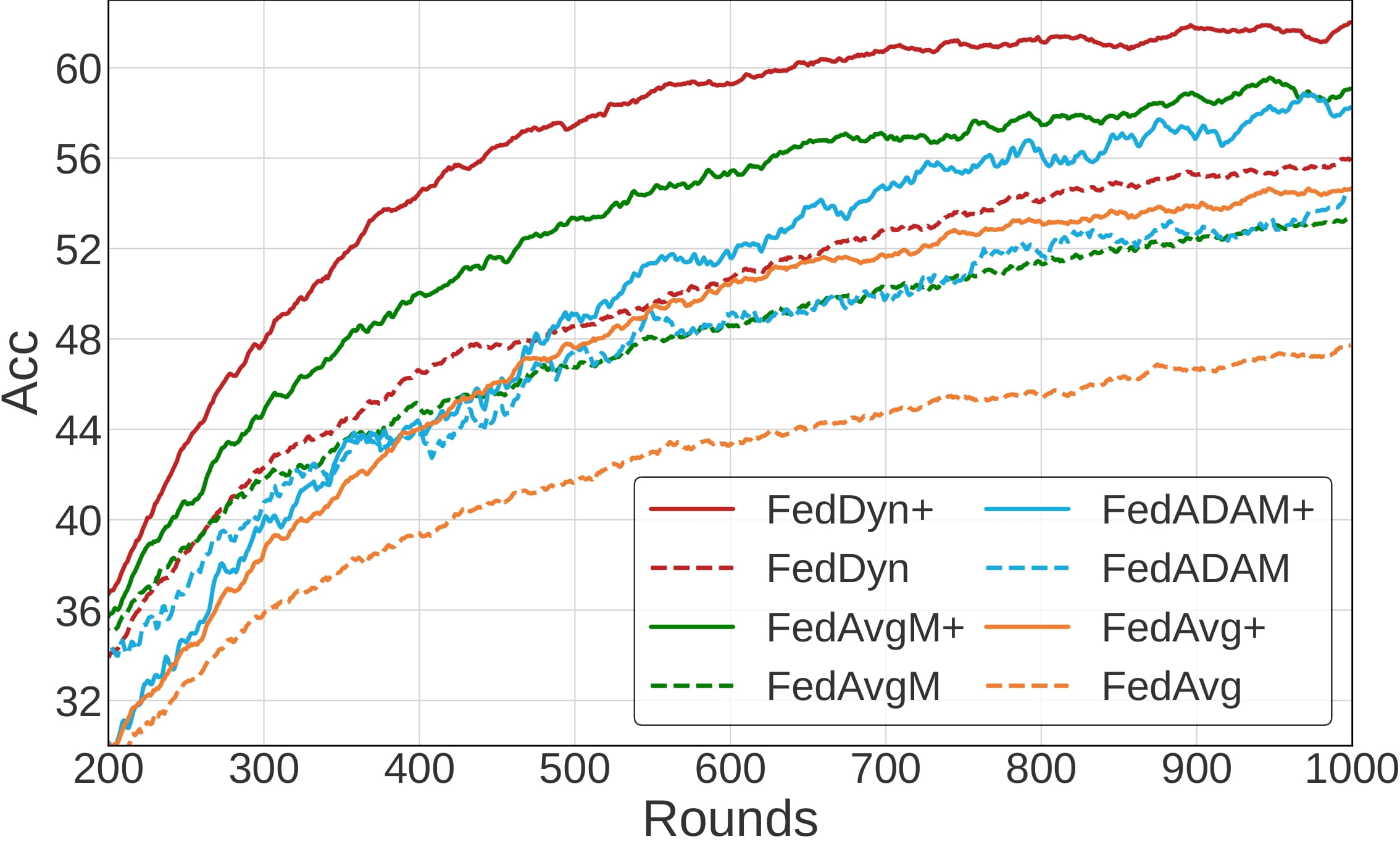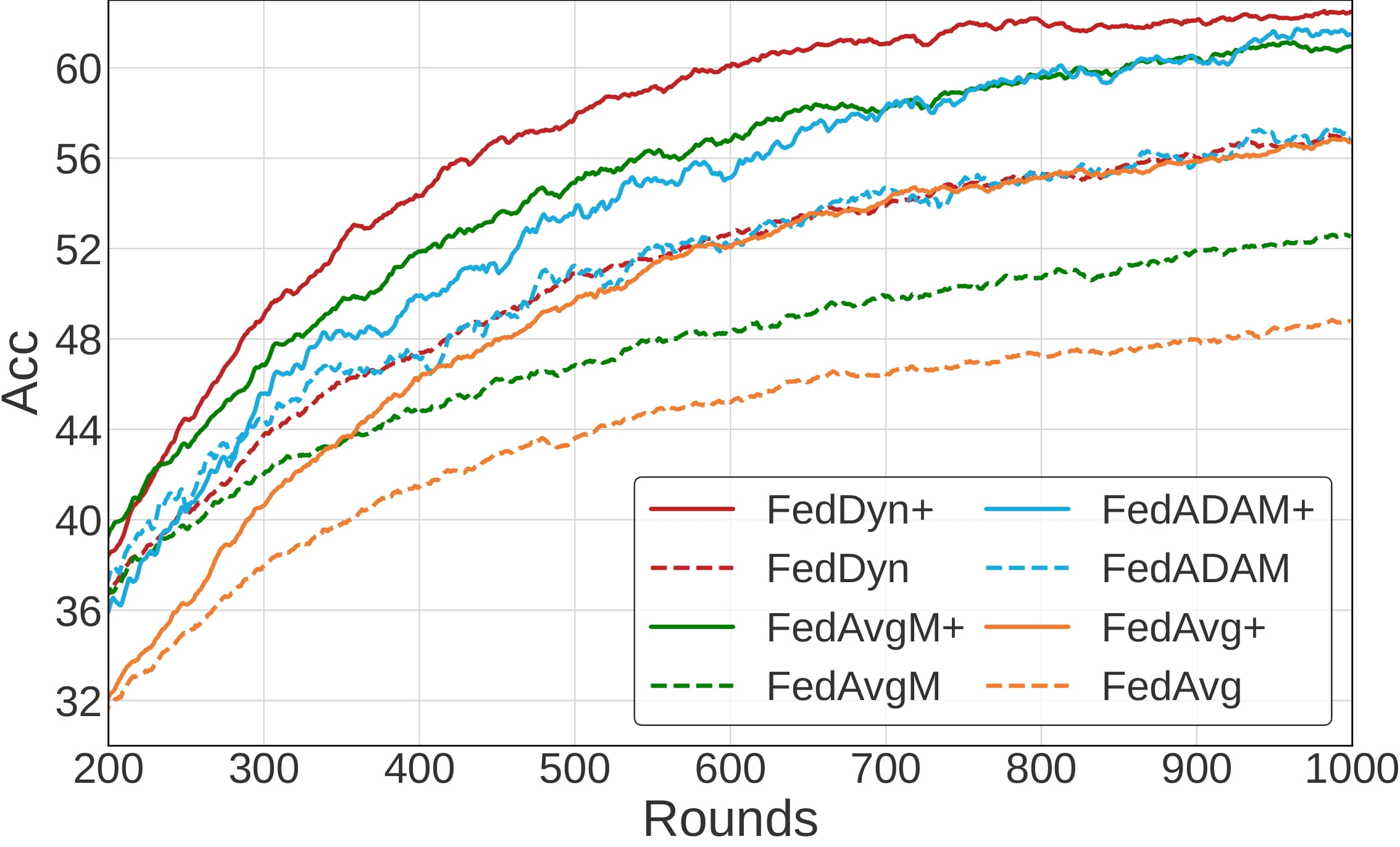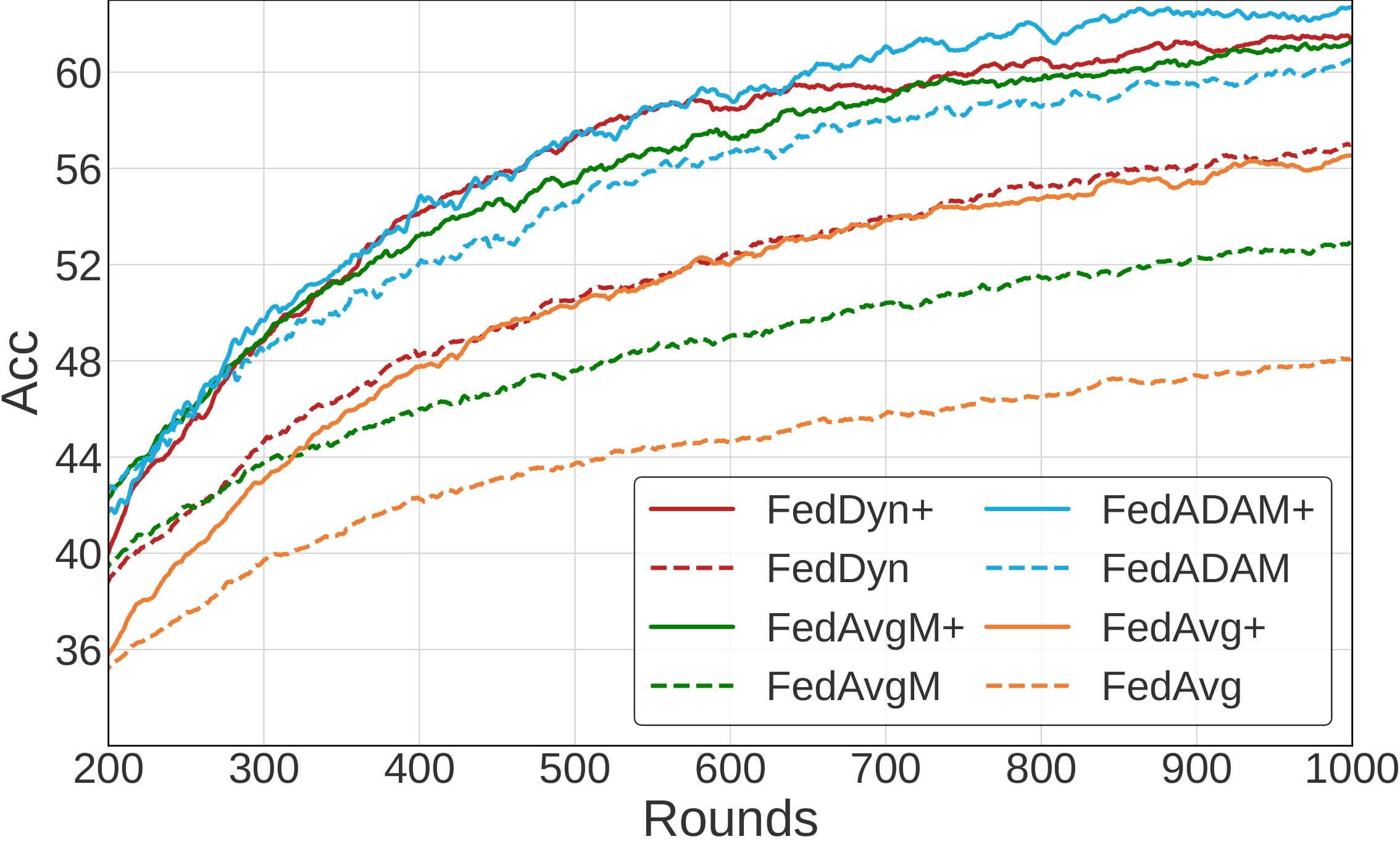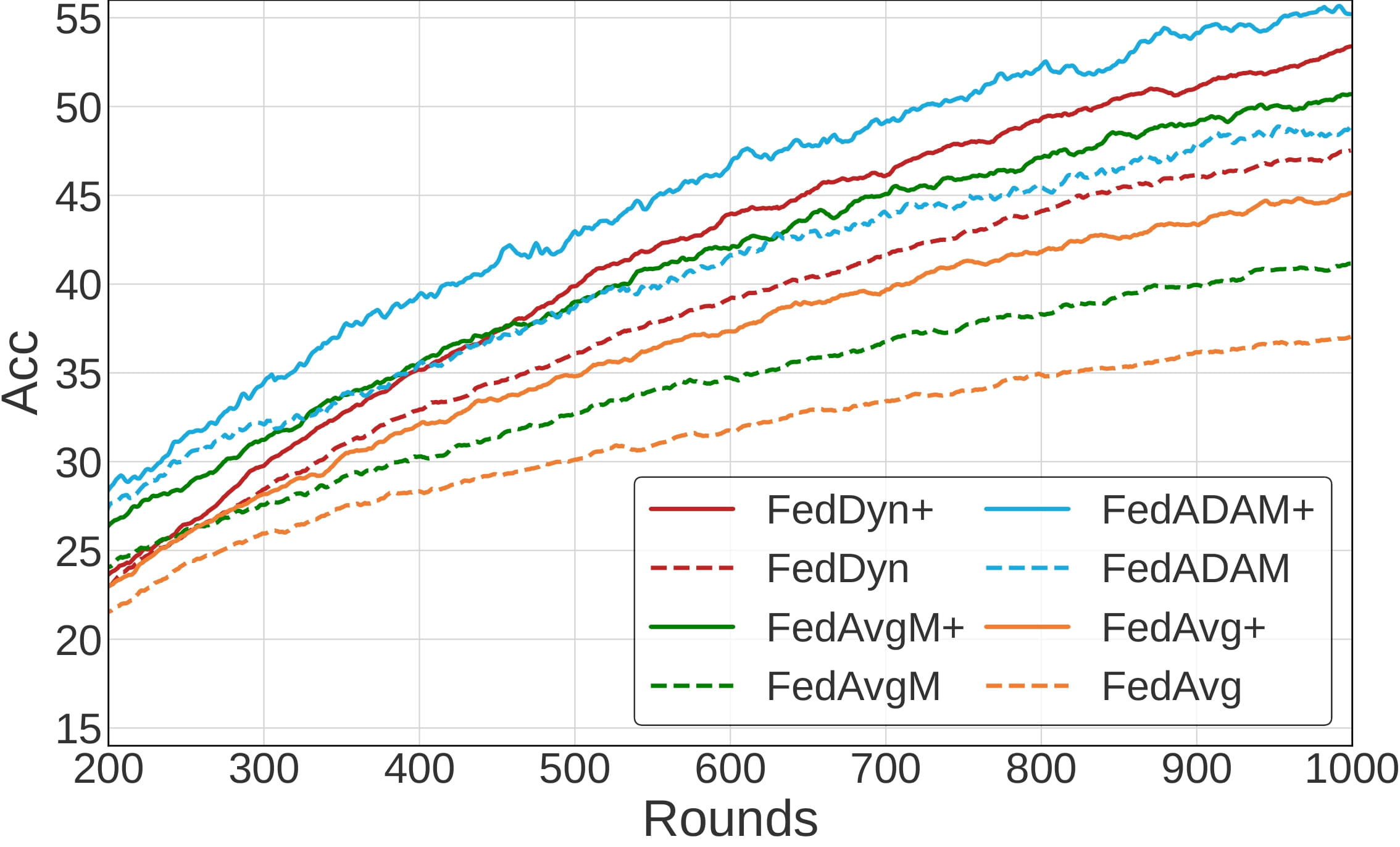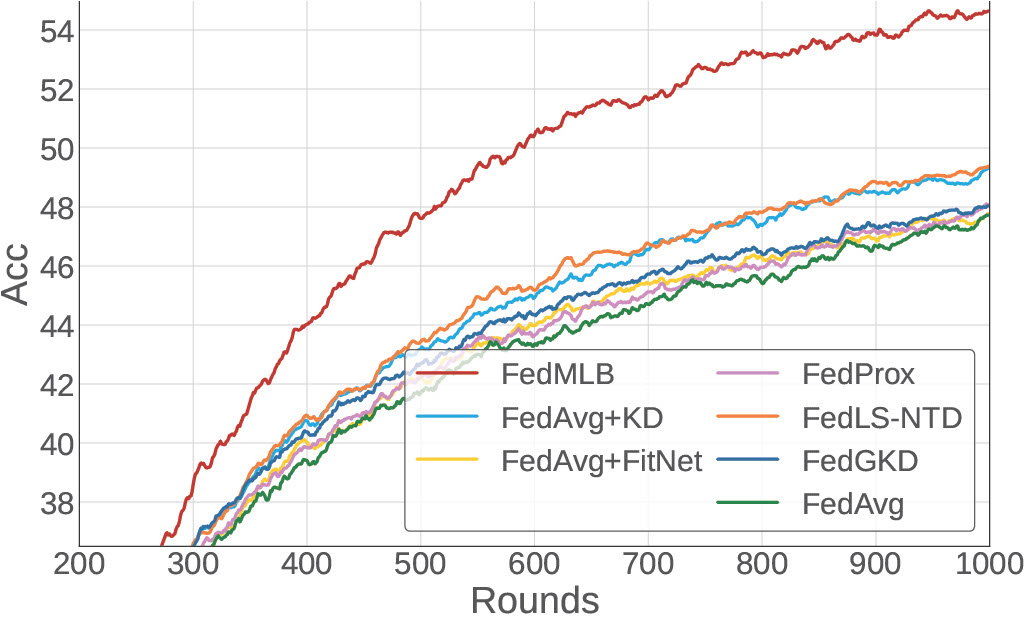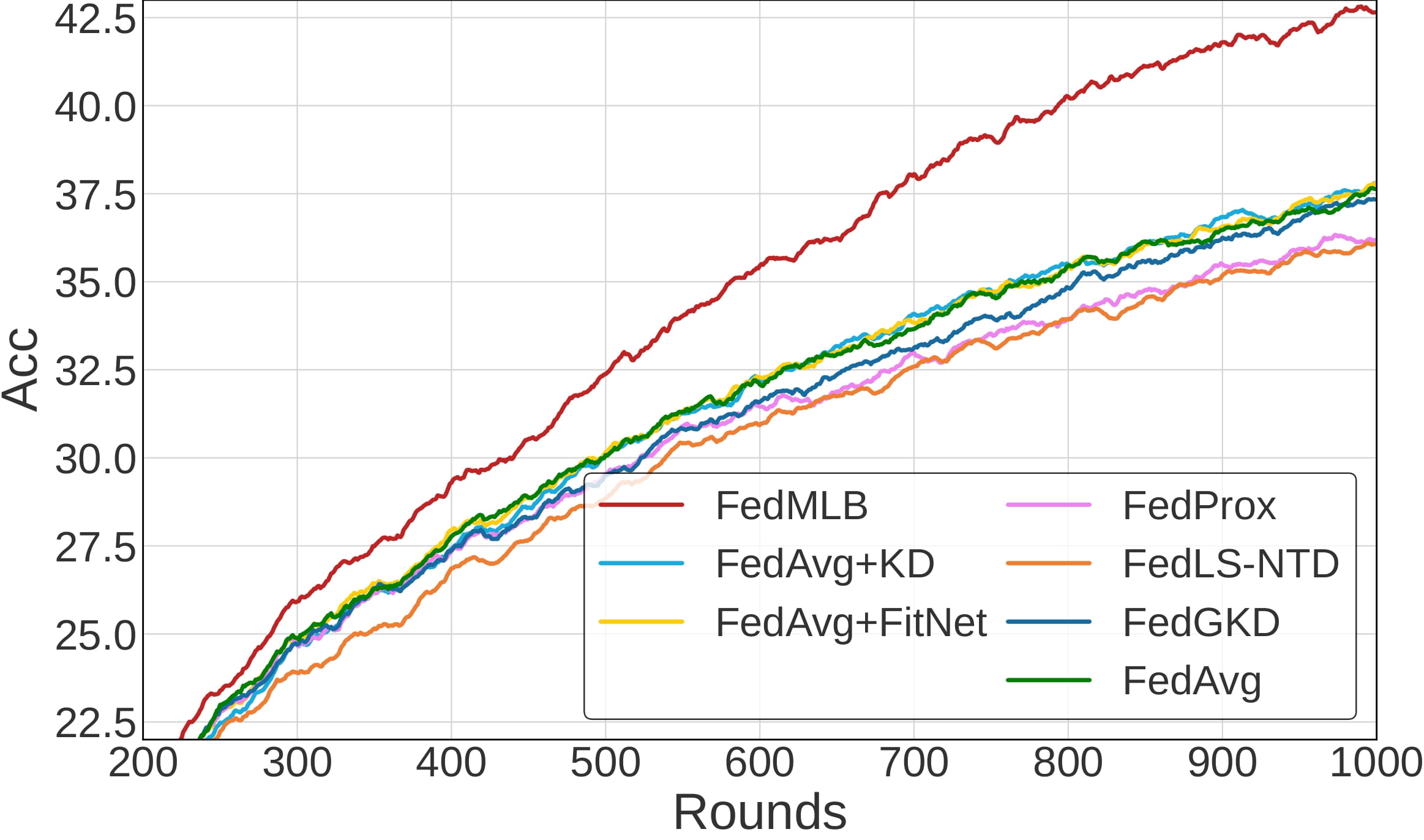We notice that FedMLB continuously outperforms the baselines large margins even when we increase the number of local iterations, which is effective for reducing the communication cost.
Citation
@inproceedings{kim2022multi,
author = {Kim, Jinkyu and Kim, Geeho and Han, Bohyung},
title = {Multi-Level Branched Regularization for Federated Learning},
booktitle = {ICML}
year = {2022}
}

